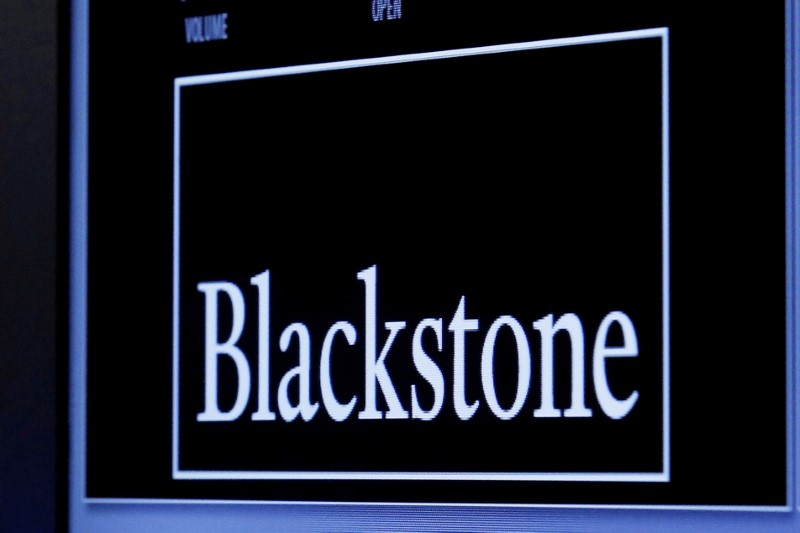
FILE PHOTO – The logo of Blackstone Group is displayed at the post where it is traded on the floor of the New York Stock Exchange (NYSE) April 4, 2016. REUTERS/Brendan McDermid/File Photo
July 19, 2018
By Joshua Franklin
NEW YORK (Reuters) – Blackstone Group LP <BX.N>, the world’s largest manager of assets such as private equity and real estate, is kicking off a fundraising “super cycle” which could see it manage more than half a trillion dollars in assets, its chairman and CEO Stephen Schwarzman said on Thursday.
Blackstone has faced questions from investors in recent years over how much room it has to grow further after increasing its assets under management five-fold since it became a publicly listed firm in 2007, amassing $439.4 billion as of the end of June.
This has left it with $88 billion in uninvested capital, yet Blackstone still plans to begin raising new flagship private equity and real estate funds in the coming months, Schwarzman said.
“We expect our fundraising super cycle to bring the firm’s total assets under management above the $500 billion milestone, likely in the first half of next year,” Schwarzman said in an investor call.
Blackstone Chief Financial Officer Michael Chae said the New York-based firm could amass around $300 billion in new fund capital between 2017 and 2019.
A growing asset base will boost the amount Blackstone earns from management fees, typically 1.5-2 percent of the assets it manages. These fees tend to be valued at a premium by investors because they are considered more stable than performance fees, Blackstone’s other main revenue stream. Blackstone is paid performance fees when investments are successful.
The private equity industry raised a record $453 billion in 2017, as investors sought returns that beat the stock market.
Overall, Blackstone reported a 10 percent drop in quarterly distributable earnings, which it uses to pay dividends, as asset sales slowed even as many of its funds appreciated much more than the stock market.
Its buyout funds increased in value by 9.5 percent in the second quarter, significantly outperforming the benchmark S&P 500 index’s <.SPX> 2.9 percent rise.
Distributable earnings fell to $700.1 million from $781.4 million on a decline in total proceeds from asset sales, which help drive performance fees. Still, Blackstone declared a quarterly dividend of 58 cents per common unit, including a 10 cent special dividend. This compared to 54 cents a year ago when there was no special dividend.
Blackstone shares were down 1.7 percent in afternoon trading in New York on Thursday, lagging the wider market.
Economic net income per unit, which reflects the mark-to-market valuation of gains or losses on Blackstone’s portfolio, rose 55 percent to 90 cents from 58 cents a year ago. Analysts expected 75 cents, according to Thomson Reuters I/B/E/S.
In January, Blackstone agreed to buy a majority stake in the Financial and Risk business of Thomson Reuters Corp <TRI.N> <TRI.TO>, the parent of Reuters News, in a $20 billion deal. Reuters News will remain part of Thomson Reuters.
(Reporting by Joshua Franklin in New York; editing by Jeffrey Benkoe and Diane Craft)
